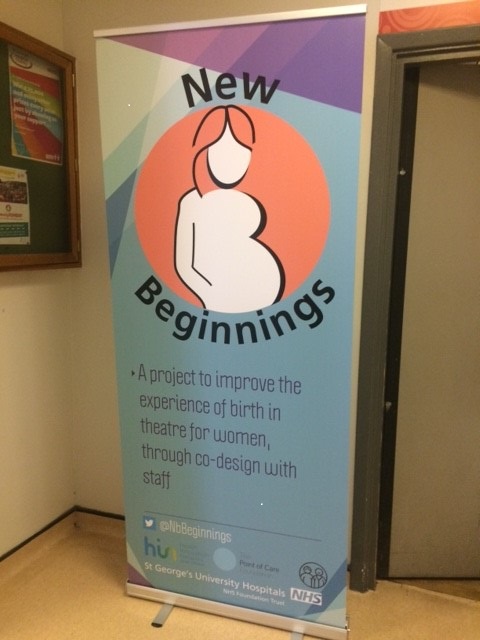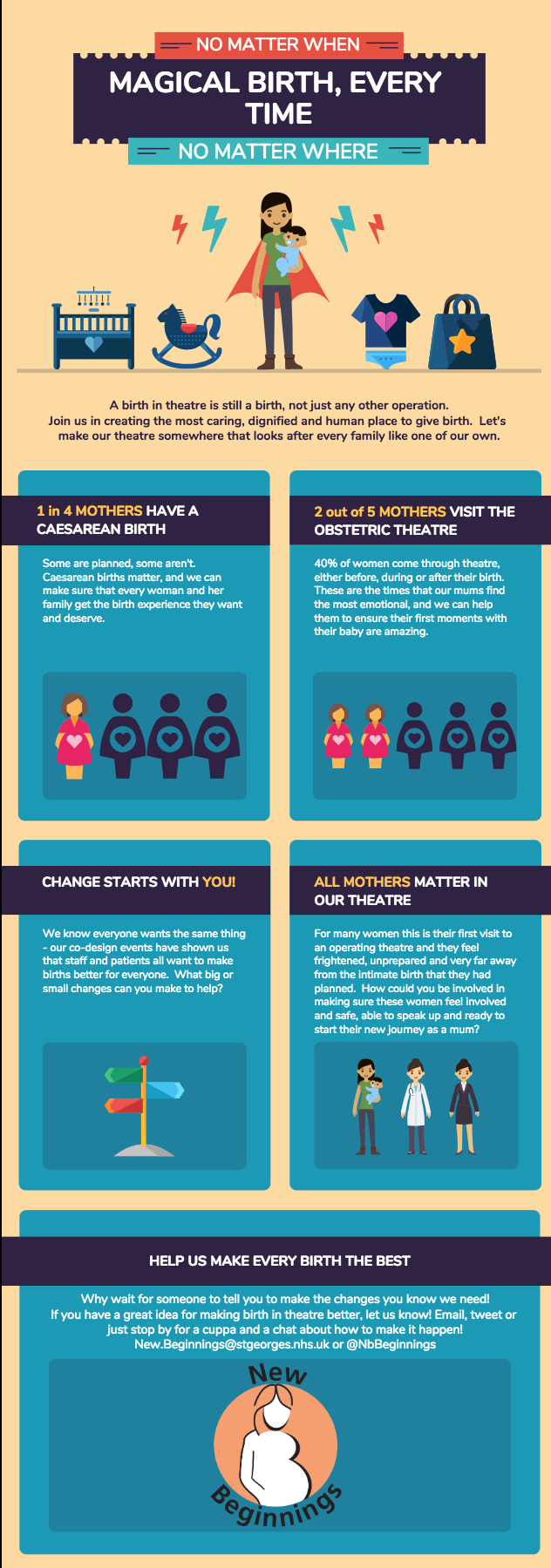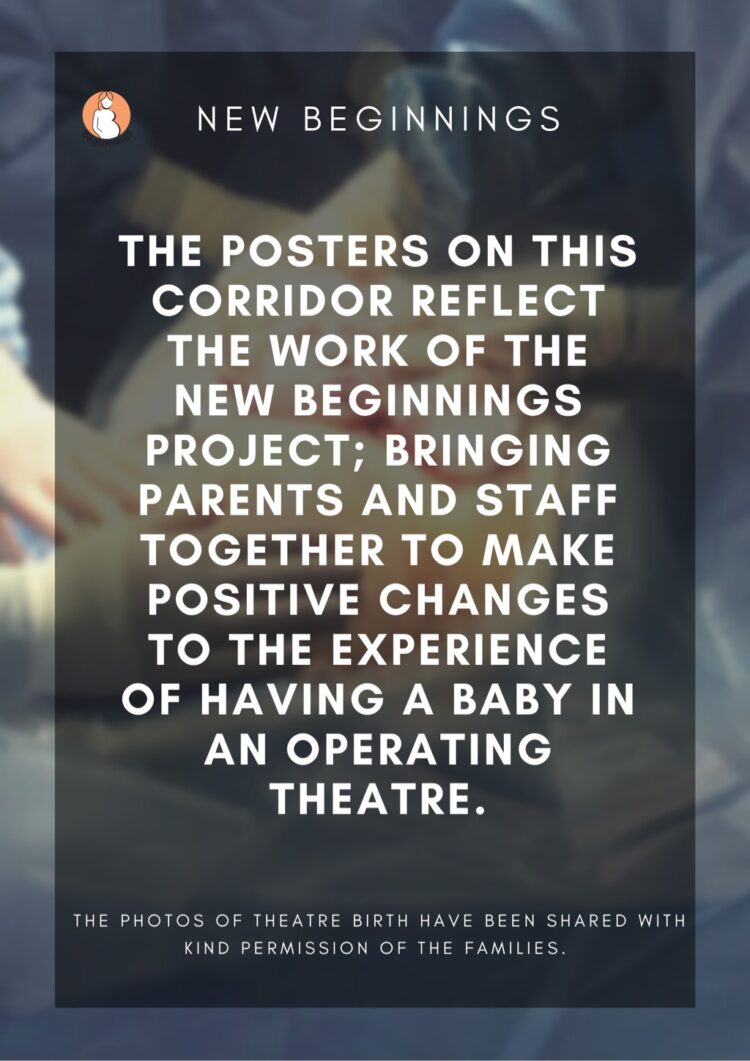2. Making the case for your project
This stage involves getting sign-up from senior colleagues and senior management. Getting buy-in at senior level will significantly increase the prospect of success, so you need to produce a compelling argument to enlist people’s support. Explain clearly why the project is needed.
At St George’s, there are about 5,000 births a year. Emma and Andrew explained that although only one in four women give birth in theatre, 40% have some part of their experience in the theatre. It has been shown that mothers experiencing operative delivery have a poorer care experience than women having non-operative deliveries. These women often find themselves falling outside the ‘normal’ agenda in birth experience discussions and planning, particularly if the decision to deliver operatively has been made late in pregnancy or in labour.
Maternity theatres can also be an area of poor staff experience, with operating department staff often feeling somewhat isolated from the rest of the maternity department. This leads to lack of ownership and empowerment to develop practices around patient or staff experience.
Feedback is collected through surveys, but Emma felt that more was needed, with a different approach to make sure the information was used for improvement:
To generate enthusiasm for the project it is important to talk to staff at all levels and explain why you think it is needed, what you would like to achieve, and the approach you will take. Stakeholder mapping is a useful exercise to help you think about all the different people who might have an interest in your project. It involves brainstorming all the different types of stakeholders there might be: for example, different clinical disciplines, other people in the hospital such as porters or catering staff who might interact with women who have been in theatre, local parent groups, the communications team, volunteers. It is useful to think about what their interest might be in your project, so that you can think about how to involve them, or simply let them know what is going on in your project and any changes you make.
Andrew explains how it was important to involve a wide range of people with different experience in the project:
Get help with communications, so that you can tell as many as people as possible about your project before it begins and before you start recruiting participants.
Some New Beginnings examples are here:


To hear how the New Beginnings team engaged people in the project, watch Andrew here:
